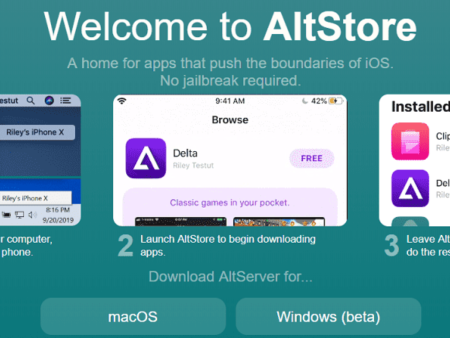Ensuring Robust Mobile App Security: Best Practices and Strategies
-
20/03/2023
-
974
-
0
As mobile devices and applications become increasingly ubiquitous daily, ensuring robust mobile app security has become a crucial consideration for developers and users alike.
Related posts
Apple Search Ads for iOS apps: The Guide for iOS Apps Marketers
The Essential Guide to App Store Optimization for iOS
1. Designing Mobile App Security
Designing secure mobile applications is a crucial step in ensuring mobile app security. Here are two supporting points for this central idea:
Incorporate security features into the design process
Start with a secure development lifecycle and follow secure coding practices
Incorporate secure data storage and transmission features into the app design, such as encryption and hashing
Conduct threat modeling to identify potential vulnerabilities and risks
Identify potential threats and attack vectors that could be used to exploit the app
Assess and prioritize risks to determine which threats pose the most significant risk to the app and its users
Develop countermeasures to address the identified threats and risks and increase your app downloads.
2. Securing Data in Transit
Securing data in transit is a critical component of mobile app security. When data is transmitted from the mobile device to a server or vice versa, it is vulnerable to interception and unauthorized access. Therefore, it is crucial to ensure that data is transmitted securely.
To secure data in transit, encryption protocols should be implemented. This means the data is scrambled and can only be read by authorized parties with the proper decryption key.
Another critical step in securing data in transit is to use secure network connections, such as Virtual Private Networks (VPNs) when accessing sensitive information. VPNs create a secure tunnel between the mobile device and the server, which makes it difficult for attackers to intercept and read the data. Additionally, authentication and authorization mechanisms should be implemented to ensure only authorized parties can access the data.

Securing Data in Transit, Source: Asoservice.com
Overall, securing data in transit is crucial for mobile app security. Encryption protocols, secure network connections, and authorization mechanisms should be implemented to ensure that data is transmitted securely and that sensitive information is protected from unauthorized access.
3. Protecting User Authentication and Authorization
Protecting user authentication and authorization is a crucial aspect of mobile app security. Authentication is the process of verifying the identity of a user, while authorization determines what actions a user is allowed to perform within the app. Here are two supporting points for this central idea:
Implement robust password policies.
Implementing strong password policies is one of the simplest and most effective ways to protect user authentication and authorization. This means enforcing password length requirements, complexity rules, and regular password resets. Passwords should never be stored in plaintext, and multi-factor authentication (MFA) should be implemented whenever possible. MFA requires users to provide two or more forms of identification to access an app, such as a password and a fingerprint scan.
Regularly review and revoke user access privileges.
To ensure that only authorized users can access, user access privileges should be regularly reviewed and revoked when necessary. This means removing access for users who no longer need it and ensuring that access permissions are only granted to those who require it. Additionally, changes to user access privileges should be logged and monitored to detect unauthorized access attempts.
In summary, protecting user authentication and authorization is critical for mobile app security. Implementing strong password policies and regularly reviewing user access privileges are two effective ways to ensure that only authorized users can access the app and that their actions are limited to what they are authorized to do. If you want to know more about it, you can find it by reading how to increase keyword app installs.
4. Preventing Unauthorized Access to Sensitive Data
Preventing unauthorized access to sensitive data is crucial to mobile app security. When sensitive data is stored on the device, it is vulnerable to unauthorized access if proper security measures are not implemented. Here are two supporting points for this main idea:
Use encryption to protect sensitive data
Encryption is scrambling data so authorized parties can only read it with the proper decryption key. Encryption to protect sensitive data can prevent unauthorized access if the device is lost or stolen. This means that even if an attacker gains physical access to the device, they cannot read the data without the decryption key.
Implement access controls to limit data access
Access controls should be implemented to limit data access to authorized users only. This means that sensitive data should only be accessible to users who require it to perform their tasks and that their access should be revoked when they no longer require it. Access controls can be implemented through user authentication and authorization mechanisms, such as passwords or biometrics.
In summary, preventing unauthorized access to sensitive data is critical for mobile app security. Encryption and access controls should be implemented to protect sensitive data stored on the device and limit data access to authorized users only. This can help prevent data breaches and protect user privacy.
5. Ensuring Mobile App Security
Ensuring mobile security is a complex and ongoing process that requires constant attention and updates. Here are two supporting points for this central idea:
Follow secure coding practices and testing
The security of a mobile app largely depends on how it is developed. Following secure coding practices, such as using secure coding languages, avoiding hardcoded credentials, and sanitizing user inputs, can help prevent security vulnerabilities. Additionally, regular security testing should be conducted to identify any potential vulnerabilities or weaknesses that attackers may exploit.
Regularly update the app and its dependencies.
Mobile app security threats evolve, meaning the app and its dependencies must be regularly updated to protect against new threats. This includes updating the app to the latest version and patches and updating any third-party libraries or dependencies used in the app. Regular updates can address security vulnerabilities and reduce the risk of a successful attack.
In summary, ensuring mobile security requires a proactive and ongoing approach. Following safe coding practices, regular security testing, and regular updates can help prevent vulnerabilities and reduce the risk of successful attacks. Mobile app developers should prioritize security throughout development and continuously monitor and update their apps to protect against new security threats.
6. Establishing Mobile App Security Policies and Procedures
Establishing mobile app security policies and procedures is essential for maintaining the security and privacy of users' data. Here are two supporting points for this central idea:
Develop and enforce policies
Organizations should develop and enforce mobile app security policies to ensure all employees, contractors, and third-party vendors understand their roles and responsibilities in maintaining app security. These policies outline the expectations for secure app development, data storage, access controls, and incident response procedures.
Regularly review and update mobile app security procedures
Mobile app security threats are constantly evolving, which means that mobile app security policies and procedures should be regularly reviewed and updated to ensure that they remain effective against new threats. This includes conducting regular risk assessments, reviewing and updating access controls and authentication mechanisms, and ensuring that all employees and third-party vendors are trained on the latest security best practices.
Establishing mobile app security policies and procedures is critical for ensuring the security and privacy of user data. Organizations should develop and enforce security policies and regularly review and update them to address new threats and vulnerabilities. Organizations can build trust with their users by prioritizing mobile app security and protecting their sensitive data from unauthorized access or theft.
Conclusion
In conclusion, by implementing best practices and strategies for mobile app security, such as those outlined in this article, developers and organizations can better protect user data and build trust with their users while reducing the risk of costly data breaches and other security incidents.
Related posts
https://asoservice.com/top-app-keyword-ranking
https://asoservice.com/macos-app-reviews-ratings
Thanks so much for reading this article.
Source: Buy ASO services




































Leave a Reply
Your e-mail address will not be published. Required fields are marked *